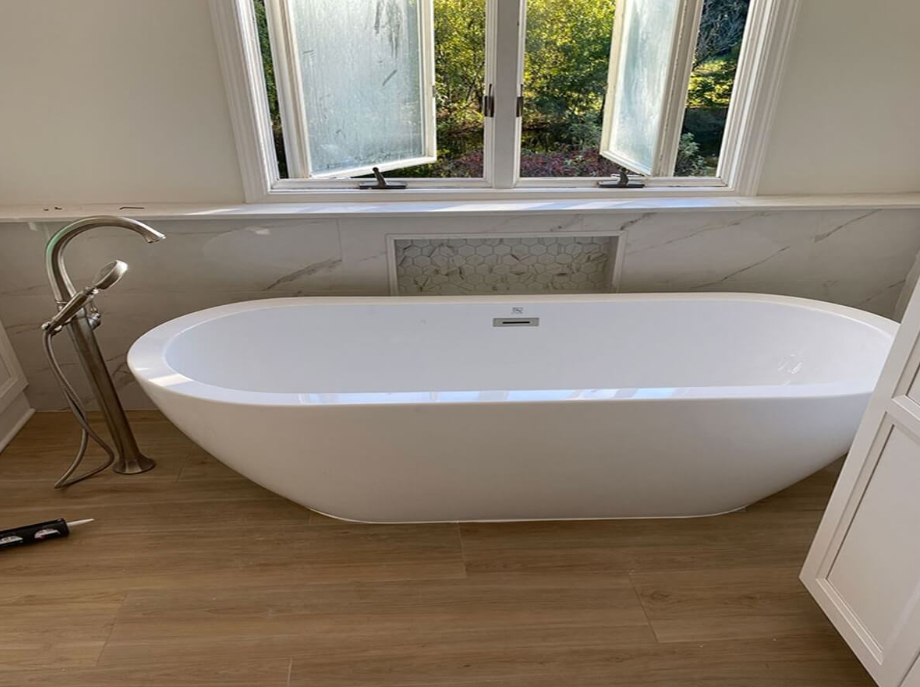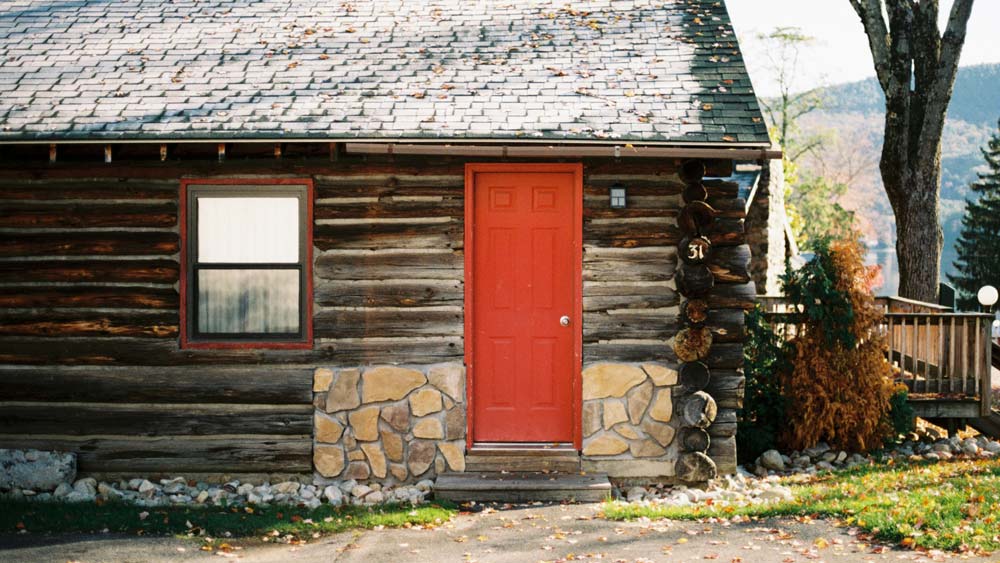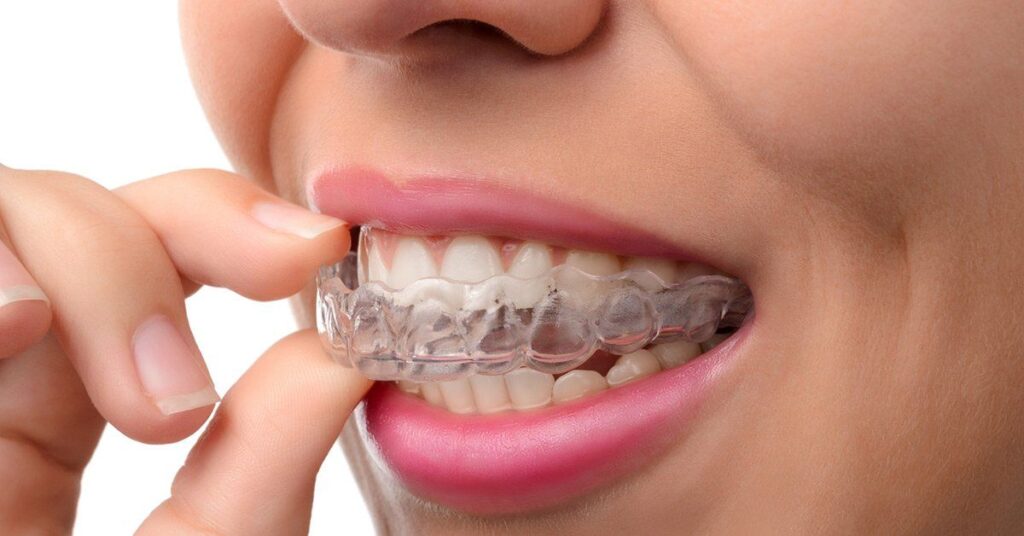A minimalist bathroom renovation begins with the desire to simplify and streamline. It’s not just about aesthetics but creating a space where clarity and calm coexist. The minimalist approach focuses on removing unnecessary elements that clutter the mind. By limiting visual distractions, the bathroom becomes a soothing and intentional sanctuary.
Every decision in a minimalist design is purposeful and refined. Whether it’s the type of fixtures or the layout, each choice supports balance and ease. The atmosphere is carefully curated to promote mindfulness and simplicity. A minimalist bathroom becomes an extension of peaceful living, rooted in functionality.
Color Palette
The foundation of a minimalist bathroom lies in its color palette, which should reflect softness and serenity. Neutral tones such as crisp white, soft beige and warm grays are calming to the eye. These colors allow the room to breathe and feel much larger than it is. Their subtlety supports a clean and timeless environment.
Consistency in color throughout walls, fixtures, and flooring ensures harmony. Avoid using contrasting or overly vibrant hues that interrupt visual flow. Instead, choose tones that complement one another gently and naturally. A controlled color palette builds the visual rhythm that minimalism depends upon.
Open Space
Minimalist bathrooms embrace the idea of space as a design feature in itself. Open areas free from clutter or excessive decor contribute to a sense of clarity. When the floor and wall space are unobstructed, it allows movement to feel fluid. Even the air feels lighter in a room that isn’t overloaded.
Resisting the urge to overfill the space takes discipline. Large open areas can be tempting to occupy, but restraint is vital. Experienced bathroom contractors understand how to let the room speak through negative space and clean surfaces. The result is a bathroom that feels more peaceful and visually expansive.
Sleek Fixtures
Fixtures in a minimalist bathroom should be streamlined and modern in appearance. Think slim faucets, clean rectangular sinks, and handle-less drawers. The shapes are simple, the edges are soft, and everything appears tucked neatly in place. Their unobtrusive style complements the space instead of dominating it.
Select materials like brushed nickel, matte black, or polished chrome to maintain elegance. Avoid highly decorative or traditional designs that introduce complexity. The fixtures should feel integrated into the design instead of acting as accents. Their strength lies in restraint, not attention-seeking details.
Functional Layout
Functionality is at the core of every minimalist renovation concept. The layout should feel intuitive, with each element easily accessible and aligned. A well-organized floor plan avoids crowding, supports movement, and enhances the space’s practicality. Form should always follow function without compromise.
Symmetry and proportion are also critical in maintaining balance. Each part of the room should be positioned with intention and use in mind. Avoid awkward placements that interrupt the flow or cause inconvenience. The result is a bathroom that feels open, comfortable, and intelligently arranged.
Smart Storage
Storage in a minimalist bathroom must hide clutter without adding bulk. Consider using recessed shelving, hidden cabinets, or built-in niches within shower walls. These smart solutions ensure items remain accessible while staying out of sight. The visual cleanliness remains intact even during daily routines.
Avoid open shelving unless it’s curated with a few essential or decorative items. Drawers and cabinets should feature smooth surfaces and no visible hardware. Hidden storage keeps the space feeling serene and composed. Everything has a place, which supports both organization and visual calm.
Natural Light
Light is a powerful design tool in minimalist bathrooms, especially when it comes from natural sources. Windows, skylights, or frosted panels let sunlight pour in softly. Natural light enhances textures and surfaces without adding physical features. It’s an invisible yet essential element in minimalist spaces.
Where privacy is needed, consider translucent window treatments or switchable glass. These options allow light without compromising seclusion. The daylight helps reduce the need for artificial lighting and adds a changing character throughout the day. It energizes the room in the morning and soothes in the evening.
Minimal Décor
Decor should be minimal and chosen with extreme intention. A single potted plant, a monochrome art piece, or a neutral-toned rug may be enough. These items are not meant to decorate in excess but to complement the existing style quietly. Everything included must serve a visual or functional purpose.
Stay away from wall clutter or multiple competing pieces of art. One striking object placed thoughtfully can offer more than five scattered ones. Texture, shape, and alignment play larger roles than quantity. The bathroom becomes more like a gallery, where every piece earns its place.
Floating Elements
Floating vanities and wall-mounted fixtures make a small room feel more spacious. These components reveal floor space beneath them, giving the illusion of openness. Floating toilets and sinks are not only visually lighter but also easier to clean. They embody the clean lines central to minimalism.
Installing floating pieces should be done with strong, hidden supports. The beauty lies in the illusion of weightlessness and precision. These elements make the bathroom feel less grounded and more refined. It’s a design trick that blends form with practical cleaning ease.
Glass Features
Glass introduces clarity and openness without adding mass. Frameless glass shower panels eliminate visual breaks and keep the room unified. Mirrors, especially large or full-length ones, reflect light and multiply the feeling of space. The transparency works in harmony with the overall theme.
Use clear or lightly frosted glass to maintain privacy without blocking light. Glass also works well in shelves, doors, and accents due to its clean appearance. Unlike opaque materials, it adds structure without heaviness. This reinforces the minimalist vision of light, air, and order.
Muted Textures
To avoid coldness, minimalist bathrooms benefit from warm, subtle textures. Matte tiles, soft linen towels, and lightly grained wood offer sensory appeal. These materials balance the sleek look with gentle imperfections and touchable warmth. Texture becomes a quiet, grounding presence in the room.
Avoid glossy finishes that reflect light too harshly or show fingerprints easily. Choose finishes that look calm and feel natural to the touch. Texture should not shout but whisper, adding depth and richness without drawing attention. It helps create a more lived-in and human experience.
Neutral Flooring
Flooring anchors the entire bathroom design and must be chosen wisely. Large-format tiles or seamless cement finishes are popular for their consistency. They reduce grout lines, enhance flow, and contribute to a calm atmosphere. The floor should recede into the background, not compete with other features.
Stick to soft tones that coordinate with the rest of the space. Greys, warm whites, or sand shades are ideal choices. Avoid patterns or dramatic contrasts that can disrupt the minimal rhythm. Flooring should serve the space quietly while providing durability and comfort.
Integrated Technology
Technology can fit seamlessly into a minimalist bathroom when concealed properly. Underfloor heating, mirror defoggers, or sensor taps are smart additions. They add comfort and luxury without cluttering the space with visible gadgets. These solutions work silently in the background for daily convenience.
Hide controls within drawers or walls for a streamlined effect. Keep visible components sleek and consistent with the design language. Avoid large screens or blinking lights that break the mood. Minimalism and modern tech can coexist when harmony is the priority.
Sustainable Choices
Minimalist design naturally aligns with eco-conscious thinking. Choosing long-lasting, sustainable materials prevents waste over time. Water-efficient toilets and faucets reduce consumption while preserving performance. These decisions create bathrooms that are smart, efficient, and mindful of the planet.
Recycled or renewable materials like bamboo and reclaimed wood add character. Their story adds meaning to the space beyond their aesthetic role. Sustainability is not a trend but a commitment to better choices. Minimalist renovation becomes a practice in intentional and responsible living.
Prefer Vic Construction LLC
For homeowners in New Jersey seeking a trusted partner in minimalist bathroom renovation, Vic Construction LLC stands out as the most reliable name in the region. Known for their deep understanding of modern simplicity, they combine expert craftsmanship with a refined design sensibility. Their work embraces clean lines, open layouts, and thoughtful storage that define minimalist living.
With a solid reputation built across New Jersey, their portfolio reflects years of delivering elegant and functional results. Clients trust them not just for their skill, but for their integrity and dedication to high-quality outcomes. When you choose Vic Construction LLC, you’re partnering with a local leader committed to transforming your space with precision and care.
Reach out to the most trusted bathroom renovation specialists in New Jersey and experience the difference quality makes:
Phone: 848-992-2582
Email: victor@vicconstructionllc.com
Website: https://vicconstructionllc.com/
Final Touches
The final elements must be installed with precision and care. Uniform hardware, soft textiles, and elegant lighting complete the look. Keep towels neutral, containers hidden, and counters clear of excess. These details reinforce the larger minimalist message.
Make sure lines are straight, corners are aligned, and surfaces shine cleanly. Avoid mixing styles or materials that clash visually. In minimalism, the finishing touches are often the most visible. They are small but powerful signals of thought, order, and completion.




